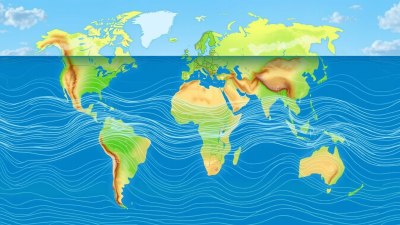How to Recognize the Signs of the Earth Waking Up
Learn the key indicators of Earth's awakening in our environment and ecosystems.

Image by montypeter on Freepik
As the world evolves, many believe that the Earth exhibits signs of waking up, representing a shift in natural rhythms. Understanding these signs involves a deep connection to nature and an attentive observation of our surroundings. Below, we explore various indicators that point towards this phenomenon, detailing how to recognize these signs effectively.
Changing Animal Behavior
One of the most noticeable signs of the Earth waking up is the change in the behavior of animals. Many species instinctively alter their migration patterns, breeding schedules, and feeding habits in response to environmental shifts. For instance, birds returning to their nesting sites earlier in the spring suggests warmer temperatures and a changing climate. Pay attention to local wildlife; unusual appearances or activities might signal that they are reacting to new environmental cues.
Shifts in Plant Life
The awakening of the Earth is prominently reflected in plant life. Observe the blooming patterns of flowering plants. Earlier blooms or species thriving outside their typical range may indicate an adjustment to climate conditions. Additionally, increased plant growth due to rising temperatures can demonstrate shifts in ecosystems. Keep a journal of your observations regarding local flora and their growth patterns throughout the seasons.
Intriguing Weather Patterns
Extreme weather events may serve as harbingers of the Earth waking up. Higher unpredictability in climate, such as unusual rainfall patterns, heatwaves, or unseasonably cold temperatures, can disrupt normal weather cycles. These changes may indicate a broader shift in global atmospheric conditions driven by climate change. A keen eye on local weather forecasts alongside historical weather data can help track these anomalies.
Increase in Geological Activity
Another critical element to consider is the increased geological activity. Events like earthquakes, volcanic eruptions, and landslides can signify the Earth’s dynamic processes. Monitoring geological activity through local news, scientific studies, or geological surveys can provide insights into how the Earth is changing beneath our feet. Notably, areas previously stable may become more volatile, prompting further scrutiny.
Expanded Biodiversity
The emergence of new species in various ecosystems signals a change in environmental balance. As certain species adapt or migrate due to changing climates, they may introduce new dynamics into local ecosystems. This increase in biodiversity, while sometimes beneficial, can also disrupt existing ecosystems. An increase in sightings of non-native species might indicate a wake-up call associated with ecological changes.
Changes in Water Bodies
Water is a vital component of Earth, and shifts in bodies of water can reflect the planet's awakening. Diminishing water levels in lakes, rivers, and reservoirs could indicate changing rainfall patterns, while greater flooding incidents might suggest an increase in precipitation intensity. Additionally, pollution or nutrient run-off can lead to harmful algal blooms, showcasing the stress placed on aquatic ecosystems. Monitoring these changes assists in understanding their broader implications.
Organic and Inorganic Pollution
The proliferation of pollution also indicates that the Earth is responding to human activity. Rising levels of plastic waste, air pollution, and chemical runoff are all signs that there’s a failure in achieving ecological balance. These indicators serve as a reminder of the consequences our actions have on nature. Observing pollution levels in various environments helps alert communities to the need for sustainable practices.
Community Awareness and Movements
Grassroots movements advocating for environmental protection and restoration showcase a growing awareness of the Earth’s condition. Initiatives focusing on reforestation, pollution clean-up, and wildlife preservation indicate that people are more attuned to the planet’s needs. Communities rallying together to protect natural resources symbolize not only awareness but also action in place of complacency.
Supporting Scientific Research
Engaging with scientific research and initiatives surrounding the Earth’s health enhances our understanding. Citizens participating in citizen science projects or supporting environmental studies contribute to gathering vital data. This research highlights patterns in ecology and helps track changes over time, further aiding in recognizing the signs of the Earth waking up.
Mindful Living
Adopting a lifestyle that prioritizes sustainability can also reflect the Earth’s awakening. Individuals who choose to reduce their carbon footprints, embrace renewable energies, and support local economies are actively participating in the reawakening process. Mindful living represents a collective consciousness shift, encouraging people to recognize their connection to the Earth.
Building Resilience
Finally, understanding how to adapt to the changes that accompany the Earth’s awakening is crucial. Communities that develop resilience through infrastructure designed to withstand natural disasters become role models. Techniques such as rainwater harvesting and green building practices contribute to the sustainable balance needed for a healthier planet.
In conclusion, recognizing the signs of the Earth waking up requires vigilance and awareness. By observing changes in animal behavior, shifts in plant life, unusual weather patterns, geological activity, and pollution levels, individuals can grasp the complexities of our environment. Building community resilience and engaging in sustainable practices further enhances our connection to this vibrant planet. Collectively, as we recognize these signs, we foster a deeper understanding of the Earth that sustains us and advocate for its future. Being attuned to these indicators can empower us to take action, ensuring we protect and nurture the Earth as it awakens.











